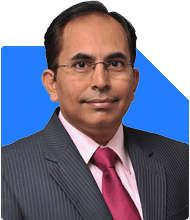Omkeshwar Singh | Answer |Ask -Follow
Head, Rank MF - Answered on Mar 17, 2020

I request to guide me regarding MF investment. I invest SIP Rs 8000 in following funds. Fund name Catgory Star Rating Nitpal Singh ·L&T Equity fund-Reg (G) Rs. 2000 Equity - Multi Cap Funds: 3 ·Kotak infra & eco reform fund (G) Rs. 2000 Equity - Sectoral Fund - Infrastructure 1 ·Principal Balanced Advantage Fund (G) Rs.2000 Hybrid - Dynamic Asset Allocation 3 ·Nippon India (ELSS) Fund (G) Rs 1000 Equity - ELSS 1 ·Franklin India - Growth Rs 1000 Equity - Multi Cap Funds: 2
| Fund name | Catgory | Star Rating |
| Nitpal Singh | ||
| ·L&T Equity fund-Reg (G) Rs. 2000 | Equity - Multi Cap Funds: | 3 |
| ·Kotak infra & eco reform fund (G) Rs. 2000 | Equity - Sectoral Fund - Infrastructure | 1 |
| ·Principal Balanced Advantage Fund (G) Rs.2000 | Hybrid - Dynamic Asset Allocation | 3 |
| ·Nippon India (ELSS) Fund (G) Rs 1000 | Equity - ELSS | 1 |
| ·Franklin India - Growth Rs 1000 | Equity - Multi Cap Funds: | 2 |
Equity – ELSS:
- Canara Robeco Equity Taxsaver Fund - Regular Plan - Growth
- BOI AXA Tax Advantage Fund-Regular Plan- Growth
- Aditya Birla Sun Life Tax Relief '96 - Growth Option
Equity - Multi Cap Funds:
- Motilal Oswal Multicap 35 Fund (MOF35)-Regular Plan-Growth Option
- JM Multicap Fund - Growth option
- UTI - Equity Fund-Growth Option
Hybrid - Dynamic Asset Allocation
- Motilal Oswal Dynamic Fund - Regular Growth
- Axis Dynamic Equity Fund Regular Plan Growth
You may like to see similar questions and answers below
Omkeshwar Singh | Answer |Ask -Follow
Head, Rank MF - Answered on Jun 15, 2022
Omkeshwar Singh | Answer |Ask -Follow
Head, Rank MF - Answered on Sep 08, 2021
Ramalingam Kalirajan |10870 Answers |Ask -Follow
Mutual Funds, Financial Planning Expert - Answered on Apr 23, 2024
Ramalingam Kalirajan |10870 Answers |Ask -Follow
Mutual Funds, Financial Planning Expert - Answered on Mar 06, 2025
Janak Patel |71 Answers |Ask -Follow
MF, PF Expert - Answered on Mar 06, 2025
Ramalingam Kalirajan |10870 Answers |Ask -Follow
Mutual Funds, Financial Planning Expert - Answered on Apr 03, 2025
Dr Dipankar Dutta |1837 Answers |Ask -Follow
Tech Careers and Skill Development Expert - Answered on Dec 05, 2025
Dr Shyam Jamalabad |108 Answers |Ask -Follow
Dentist - Answered on Dec 05, 2025
Dr Shyam Jamalabad |108 Answers |Ask -Follow
Dentist - Answered on Dec 05, 2025
Dr Shyam Jamalabad |108 Answers |Ask -Follow
Dentist - Answered on Dec 05, 2025
Dr Dipankar Dutta |1837 Answers |Ask -Follow
Tech Careers and Skill Development Expert - Answered on Dec 05, 2025
Ulhas Joshi |280 Answers |Ask -Follow
Mutual Fund Expert - Answered on Dec 05, 2025
Dr Dipankar Dutta |1837 Answers |Ask -Follow
Tech Careers and Skill Development Expert - Answered on Dec 04, 2025
Ravi Mittal |676 Answers |Ask -Follow
Dating, Relationships Expert - Answered on Dec 04, 2025
Anu Krishna |1745 Answers |Ask -Follow
Relationships Expert, Mind Coach - Answered on Dec 04, 2025
Anu Krishna |1745 Answers |Ask -Follow
Relationships Expert, Mind Coach - Answered on Dec 04, 2025






























